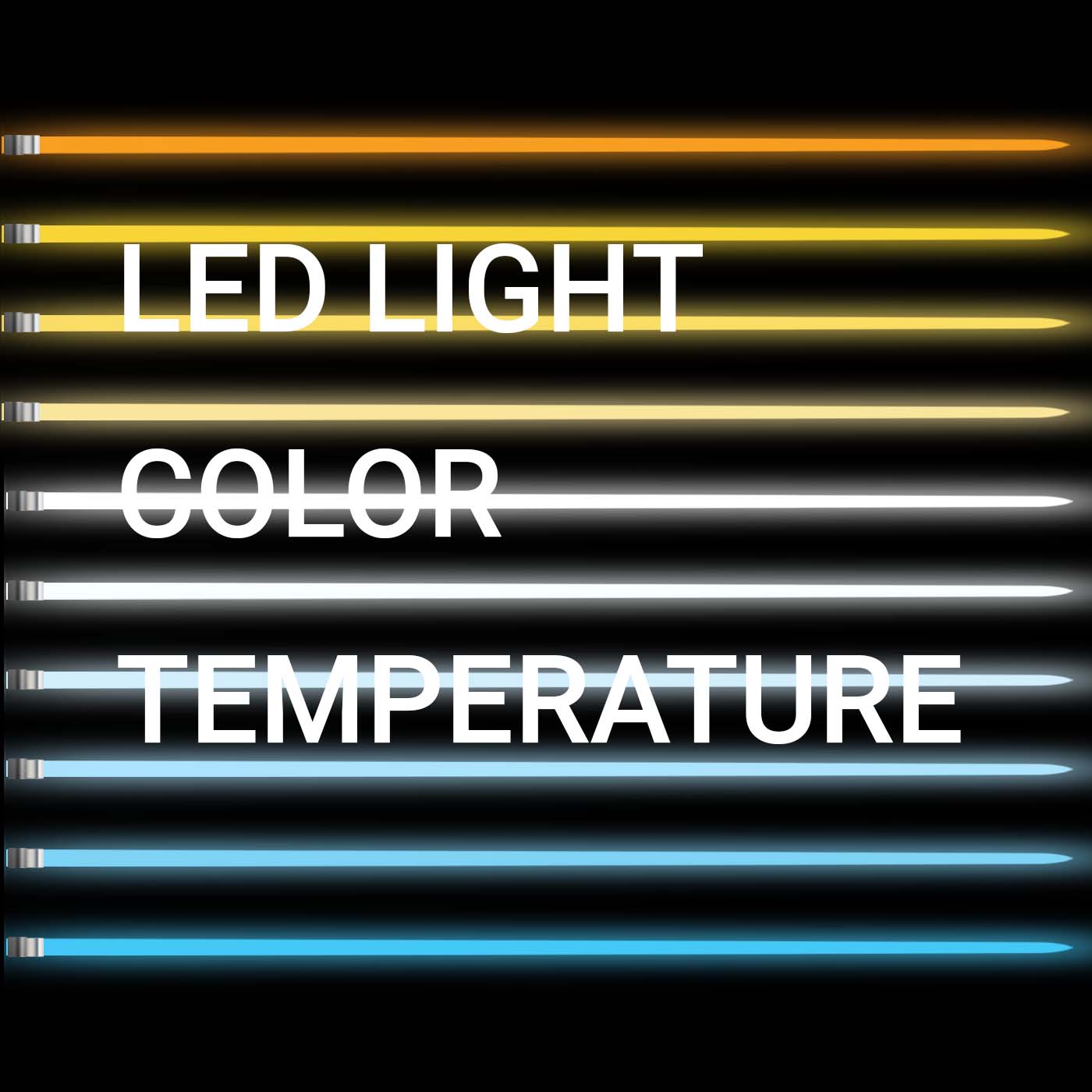Color rendering index FAQ
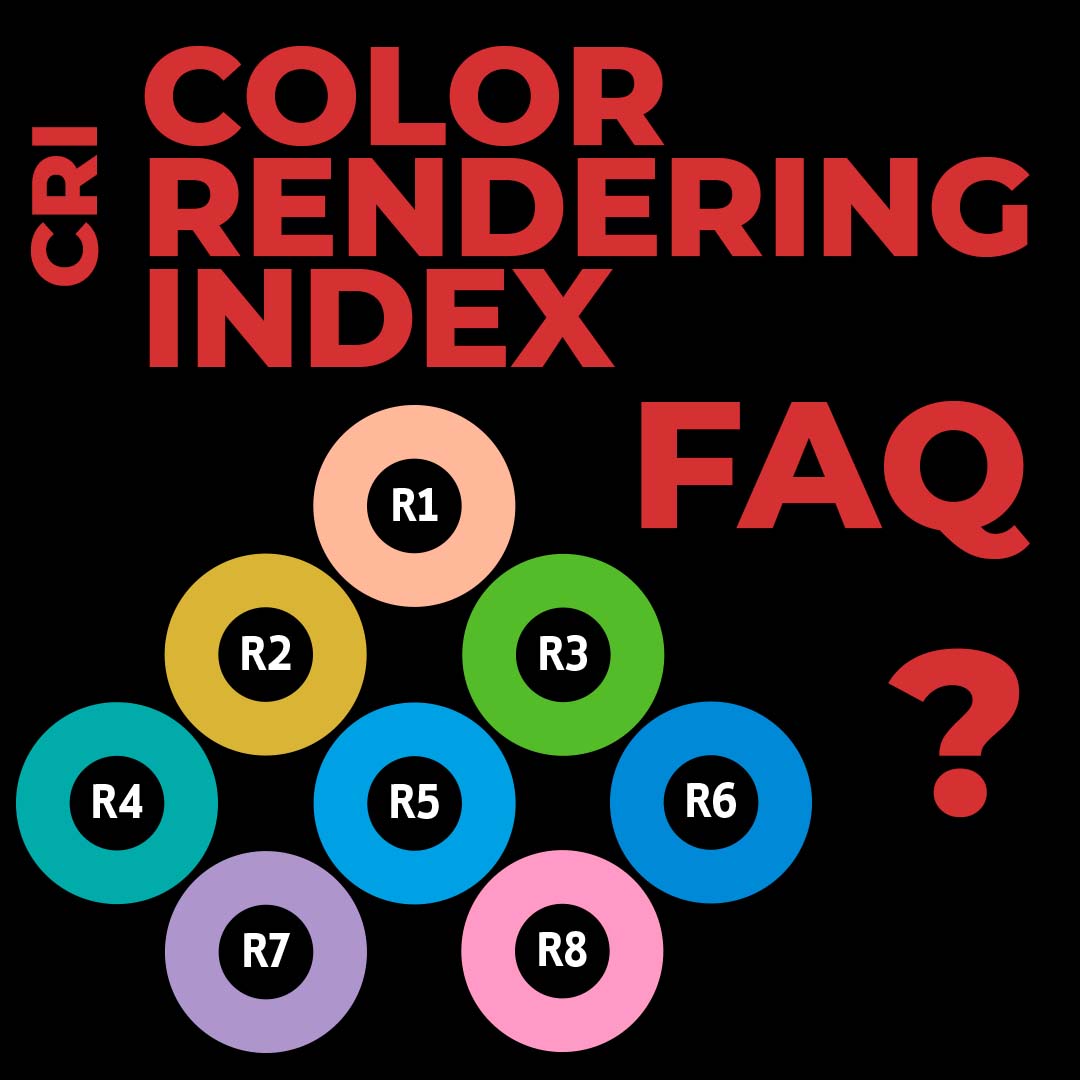
Color rendering index FAQ

To select the right LED light or desk lamp you need to understand the Color Rendering Index (CRI). It is critical for any work or hobby where color is important.
Does CRI matters ? Which one is more important CRI or color temperature?
Here we have gathered the Frequently Asked Questions (FAQ) regarding CRI in our article color rendering index FAQ.
What Is Color Rendering Index (CRI)?
The CRI, or color rendering index, is a measurement of how accurately an artificial light source such as LED’s is able to render colors compared to a natural light source (The sun).
It is rated on a scale of 0-100, with higher numbers indicating a more accurate color rendering.
For a better understanding of CRI, check our article: Understanding Color Temperature Index.
How is the CRI calculated?
The CRI is calculated by comparing the colors of a test light source to a reference light source (such as natural sunlight).
The test light source is rated on how accurately it is able to render a set of standard colors compared to the reference light source.
The CRI is calculated based on a series of test colors under both the reference light source and the light source being tested. The average of these values is used to determine the overall CRI of the light source.
Tests needs to be done in a laboratory using advanced devices such as a photospectrometer or a Spectroradiometer.
Why is the CRI important?
The color rendering index CRI is important because it affects how we perceive colors in the environment.
If a light source has a low CRI (below 85), it may make certain colors appear distorted or washed out, which can affect our ability to accurately see and interpret the colors around us.
A high CRI (95+) ensures that colors are accurately rendered and allows us to see the world as it is intended to be seen.
Be aware that most manufacturer are referring to a limited CRI analyzing only 8 colors. If you want a perfect color rendering index, look for extended CRI or data sheets showing the R9 values.
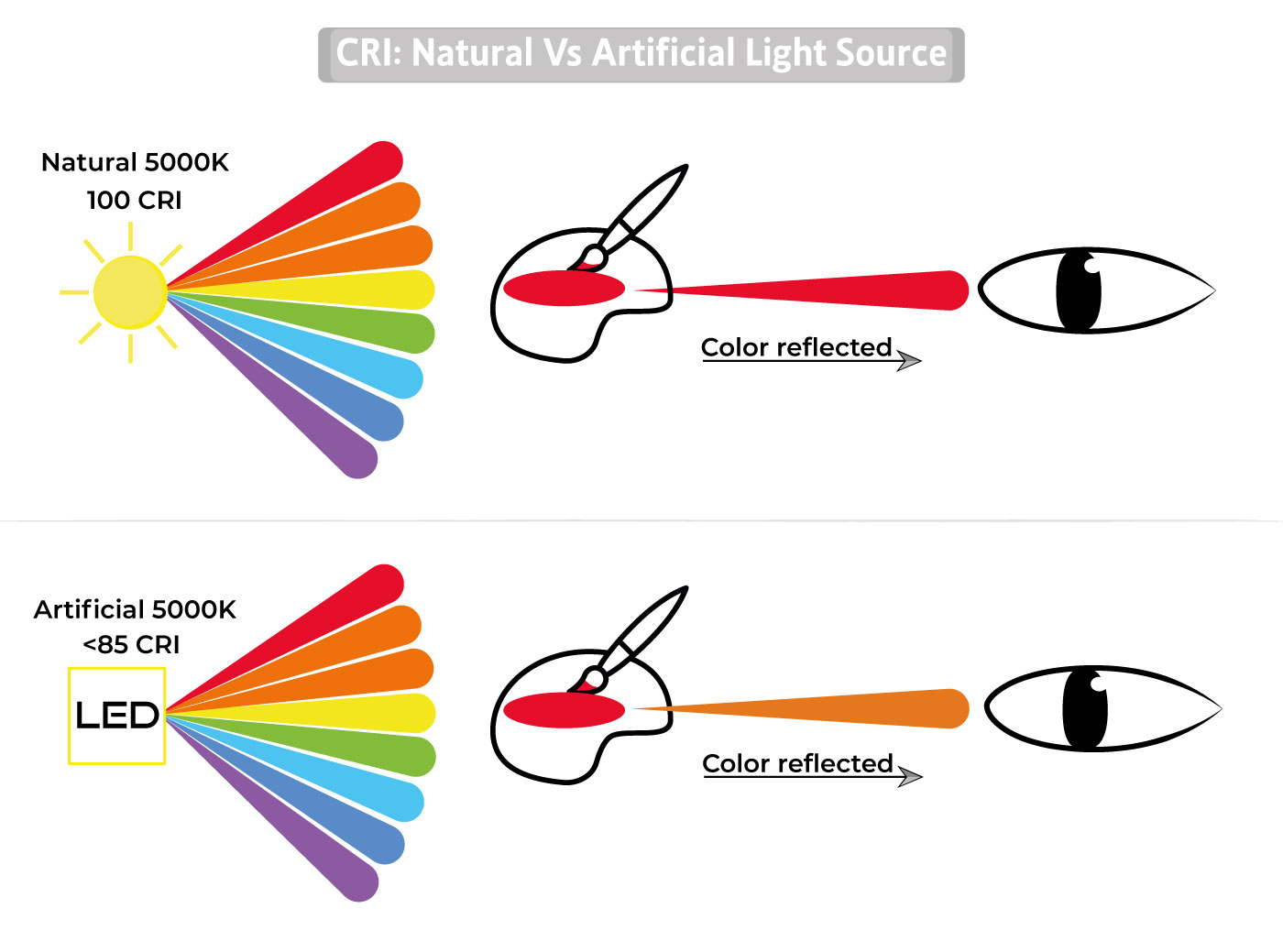
Color rendering index FAQ : What is a high CRI value?
A good CRI value is generally considered to be above 90.
This means that the light source is able to accurately render most colors, with only minor deviations from the reference light source.
Please note that CRI analyses only 8 colors… missing the yellow, red colors and skin tones!
If you want a perfect color rendering look for a lamp using the extended CRI or R1-R15 values or TM30-20 index such as the Redgrass R9 desk lamp. Of course, the values should be as close as possible to the maximum, generally 100.
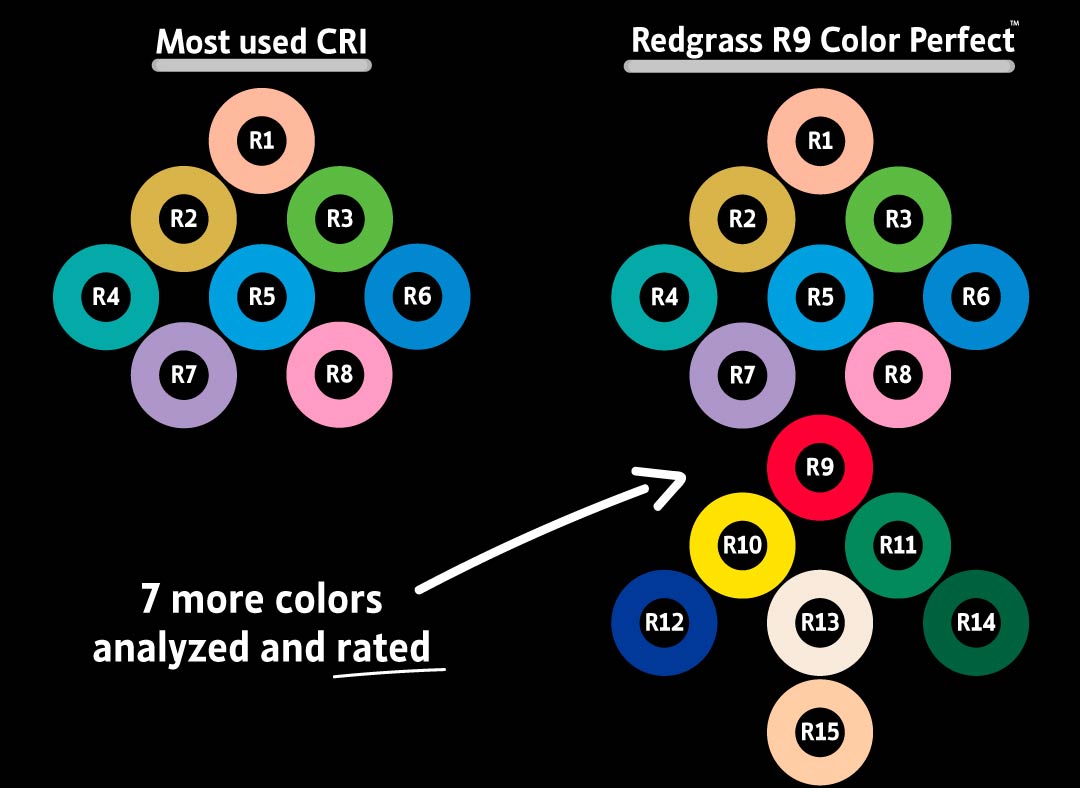
How do I know a light source has a high CRI?
To choose a light source with a high CRI, you can look for a light source that specifically advertises a high CRI value. 95+ for example.
You can also look for light sources that are designed to closely mimic the spectrum of natural sunlight, as this can help to ensure a high CRI.
You can also look for a more accurate index. CRI is focusing on only 8 colors. If you truly want the best color rendering possible you should look for info such as extended CRI or R1-R15 values or TM30-20 index.
Finally, you can also consult with a lighting expert or professional to help you choose a light source with a high CRI for your specific needs.
What is the difference between CRI and Color Temperature?
CRI (Color Rendering Index) and color temperature are two different ways of measuring and specifying the color of light.
CRI is a measure of how accurately a light source renders the colors of objects compared to a reference light source. It is expressed as a number on a scale from 0 to 100, with higher numbers indicating better color rendering.
A CRI of 100 means that the light source renders colors perfectly,(like the sun) while a CRI of 85 or lower may result in colors appearing distorted or unnatural.
Color temperature, on the other hand, is a measure of the hue of a light source, with higher color temperatures corresponding to a more blue or cool hue, and lower color temperatures corresponding to a more red or warm hue.
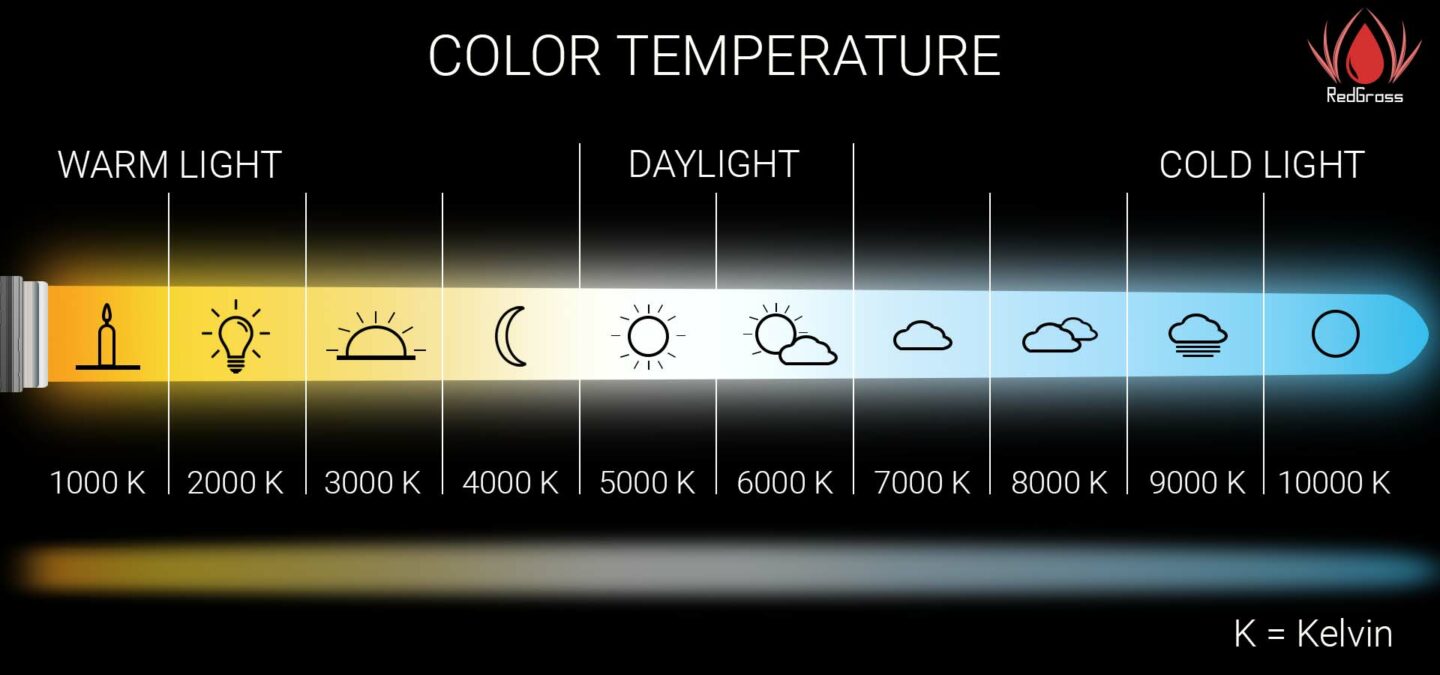
Color temperature is typically measured in degrees Kelvin (K). For example, a light source with a color temperature of 2700K would be considered warm, while a light source with a color temperature of 6500K would be considered cool. A color temperature of 5000K would be considered as a neutral white.
In general, CRI is more important for applications where accurate color rendering is critical, such as painting, drawing or museum.
This explains why artists and photographers use a color checker (a palette with standardized colors) to determine the color rendering (CRI) quality.
Color temperature, on the other hand, is more important for applications where the mood or atmosphere of a space is important, such as in restaurants or residential settings.
Color rendering index FAQ: Tips
CRI, extended CRI, R1-R15 value, TM30-20 values are an important factor to consider when choosing lighting for applications where accurate color rendering is important, such as drawing, painting, miniature painting, tattoo art and photography studios.
It is also an important consideration for home lighting, as it can affect the appearance of skin tones and the overall appearance of rooms and spaces.
It is, by far, the most important value when selecting a LED light or a desk lamp.

